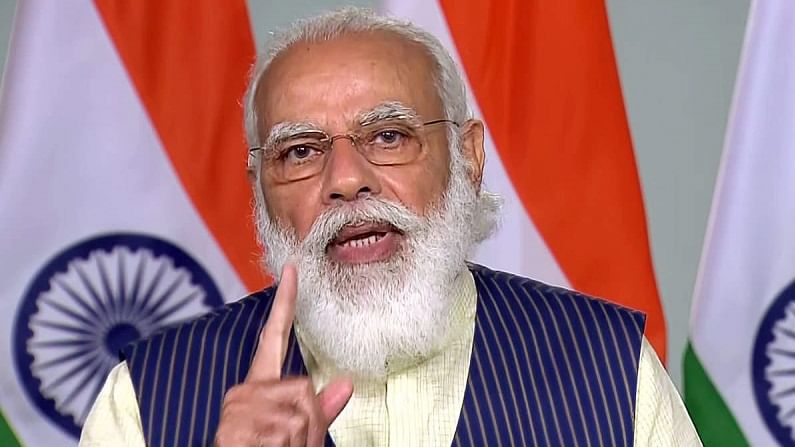Indian farm sector a champ in Covid-crippled year: PM Narendra Modi
A good farm output has a soothing effect on the entire economy with cooling effect on inflation that eventually helps determine the EMIs you pay on different loans
- Avijit Ghosal
- Last Updated : May 30, 2021, 18:41 IST

The Indian farmer emerged a champion by achieving record produce in a Covid-hit year, Prime Minister Narendra Modi said on Sunday.
“Do you know that even in this pandemic, our farmers have achieved record produce! The farmers produced record output and this time the country went on to procure record amount of crops,” he said on the radio talk Mann Ki Baat.
It is often said that no matter how much the country progresses on the path of industry and service, Indian economy is moored in agriculture. The truth embedded in this view perhaps never shone more brightly.
Free foodgrain Modi attributed the fact that free ration is being provided to about 80 crore citizens during the pandemic to the farm output.
“Due to the record food grain production, our country has been able to provide support to every countryman. Today, 800 million underprivileged denizens are being provided free ration in this hour of crisis,” he added.
In FY21, agriculture was one sector that recorded positive growth rates in all the three quarters for which government data is available so far. Moreover, the country’s annual food output is set to hit record levels in FY21, despite other sectors of the economy – save pharmaceuticals and information technology – being dented in the Covid-crippled year.
Rise in yield for five years
Data reveals that Indian yield is set to rise higher for five years in succession.
The importance of farm output has a direct bearing on consumer price index-based inflation since food and food items have a weightage of 48.24% in the basket that is used to measure inflation.
Farmer & inflation This inflation data has far reaching impact on the country’s economy since Reserve Bank of India is guided by this inflation figure when it determines monetary policy and interest rates (repo and reverse repo).
The interest rates, in turn, have a huge cascading effect on the entire economy since all interest rates are tied to the benchmark repo rates.
Therefore, if your home loan of car loan EMIs go down, or an entrepreneur gets loan from banks for this project a few basis points lower, he can, in a way, thank Indian farmers.
Food processing
A bumper crop also boosts the labour-intensive food processing industry by lowering the price of raw materials.
In the second advance estimates, the agriculture ministry had said that foodgrain production is estimated to rise 2% in FY21 to an all-time high of 303.34 million tonnes on better output of rice, wheat, pulses and coarse cereals.
Farm exports On May 30, the Prime Minister also gave examples of how jackfruit from Tripura and litchi from Bihar are being exported to London.
There are dozens of other farm outputs that are exported from India. These include tea, coffee, jute, rice, mango, nuts etc.
All-round rise In the 2019-20 crop year, India’s foograin output (mostly wheat, rice, cereals and pulses) stood at a record 297.5 million tonnes.
According to the data shared by the ministry, rice production is pegged at record 120.32 million tonnes against 118.87 million tonnes in the previous year.
Wheat production is supposed to rise to a record 109.24 million tonnes in 2020-21 from 107.86 million tonnes in FY20, while output of coarse cereals is likely to increase to 49.36 million tonnes from 47.75 million tonnes.
The output of pulses is estimated at 24.42 million tonnes, up from 23.03 million tonnes in 2019-20 crop year.
The production of oilseeds is estimated at 37.31 million tonnes in 2020-21 compared to 33.22 million tonnes in the previous year.
More area According to reports, the sown area in the Rabi season (2019-20), the sown area expanded by 10% to 66.6 million hectares. The Rabi season is between mid-November, when the seeds are sown and May, when the crop is harvested.
It is to the credit of the farmers that they were able to emerge out of the pandemic and record this output. Incidentally, agriculture constitutes about 40% of the rural economy.
The government has also raised fertiliser subsidy by an additional Rs 68,000 crore to meet an anticipated higher demand.
According to the ministry data, the area under wheat increased 3% to a record 34.6 million hectares, area under gram cultivation expanded 5% to 11.45 million hectares.
Fertiliser subsidy Earlier this month the prime minister decided to increase the subsidy for DAP fertiliser from Rs 500 a bag to Rs 1,200 a bag that translated to an increase of 140%. The Centre decided to bear all the burden of the price hike, a government statement read.
Every year, the Centre spends about Rs 80,000 crore on subsidy on chemical fertilisers. With the increase in DAP subsidy, it will spend an additional Rs 14,775 crore as subsidy in the kharif season (June to October).
While rainfall was normal last year helping the bumper crop, Indian Meteorological Department has predicted normal monsoons this year too, raising hopes of yet another year of ample production.
Download Money9 App for the latest updates on Personal Finance.
Related
- Covid first wave led to increase in antibiotic misuse in India: Study
- Centre rushes teams to six states reporting a high number of Covid cases
- Covid-19: India records 46,617 new cases; national recovery rate crosses 97%
- India’s medical infrastructure well prepared to deal with possible third Covid wave, says FM
- Karnataka makes RT-PCR negative report, vaccine certificate must for Kerala travellers
- National Doctors’ Day: Over 1500 doctors sacrificed their lives in fight against Covid-19

